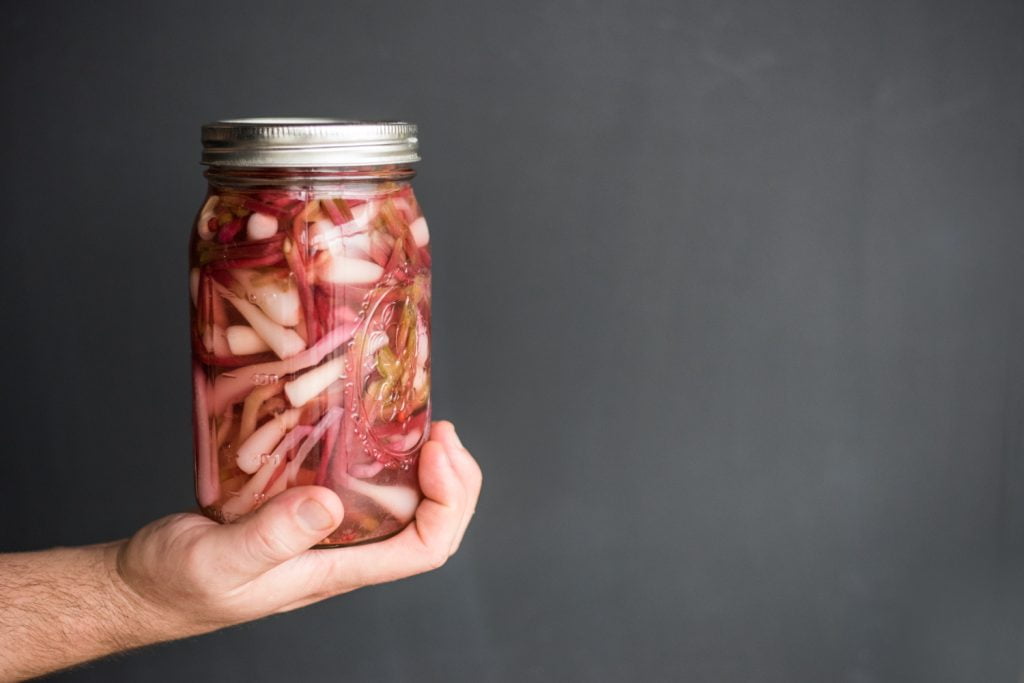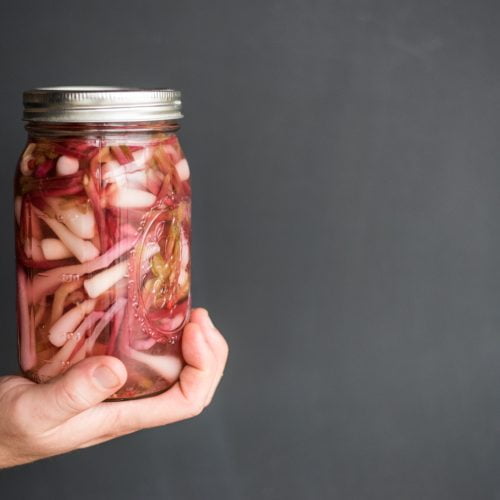
Pickled Ramps Recipe
If you’re looking to add a burst of flavor to your dishes, pickled ramps recipe might just be the answer. This delectable recipe has a rich history, hailing from the lush countryside of the United States. In this article, we will take you through the fascinating history of pickled ramps, provide step-by-step instructions, list the essential ingredients, and even give you a lowdown on calories, preparation time, and serving size. Get ready to embark on a culinary adventure with this delightful springtime treat.
The History of Pickled Ramps:
Pickled ramps have a fascinating history deeply rooted in Appalachian and Native American cuisine. These wild leeks, also known as wild ramps, have been foraged for centuries. They were a staple in the diets of indigenous peoples and later became a beloved springtime tradition in the United States. Today, their unique flavor and versatility make them a must-try for food enthusiasts around the world.

Pickled Ramps Recipe
Equipment
- A large pot
- Mason jars with lids
- Cutting board and knife
- Measuring cups and spoons
Ingredients
- 1 pound of fresh ramps
- 2 cups of white wine vinegar
- 1 cup of water
- 1/4 cup of sugar
- 1 tablespoon of salt
- Red pepper flakes (to taste)
- Peppercorns (to taste)
- Fresh thyme sprigs
- Mason jars for storage
Instructions
- Start by thoroughly cleaning the ramps. Trim the roots and any yellowing leaves.
- In a large pot, combine the white wine vinegar, water, sugar, salt, red pepper flakes, and peppercorns. Bring the mixture to a boil, stirring until the sugar and salt are dissolved.
- Add the cleaned ramps and fresh thyme sprigs to the pot. Let them simmer for about 5-7 minutes, until they become tender but still vibrant.
- Using tongs, carefully transfer the ramps into sterilized mason jars, ensuring they're packed tightly.
- Pour the hot pickling liquid over the ramps, leaving about half an inch of space at the top of the jar.
- Seal the jars with lids and let them cool at room temperature.
- Once cooled, store the pickled ramps in the refrigerator for at least 24 hours to allow the flavors to meld.
Video
Similar Recipes:
If you enjoy pickled ramps, you might also like pickled asparagus, pickled green beans, or pickled garlic scapes. These recipes offer a delightful array of flavors and textures.
YouTube Video Credits:
Mario Batali
Frequently Asked Questions About Pickled Ramps
1. What are pickled ramps?
Pickled ramps are ramps, or wild leeks, that have been preserved in a brine or vinegar-based solution, often flavored with spices.
2. How is the preparation of pickled ramps done?
The process involves immersing cleaned ramps in a solution of vinegar, water, salt, sugar, and various spices. The mixture is heated and poured over the ramps before canning.
3. How would you describe the taste of pickled ramps?
Pickled ramps offer a distinctive flavor, combining the earthiness of ramps with the tanginess of the pickling solution, resulting in a savory and slightly pungent taste.
4. Can pickled ramps be consumed directly, or are they used in recipes?
Pickled ramps are versatile and can be enjoyed on their own as a flavorful condiment or incorporated into recipes to add a zesty touch to dishes like salads, sandwiches, or charcuterie boards.
5. What is the shelf life?
Properly sealed and stored in a cool, dark place, pickled ramps can maintain their quality and flavor for several months.
6. Should opened pickled ramps be refrigerated?
Yes, refrigerating opened pickled ramps is recommended to preserve their freshness and prevent spoilage.
7. Is it possible to pickle ramps at home?
Certainly, homemade pickled ramps can be prepared using a mixture of vinegar, water, salt, sugar, and desired spices. The ramps are cleaned, blanched, and then pickled in the solution.
8. In what dishes can pickled ramps recipe be incorporated?
Pickled ramps can elevate a variety of dishes, including salads, pasta, grilled meats, or serve as a tasty accompaniment to cheeses and charcuterie.

Leave a Reply